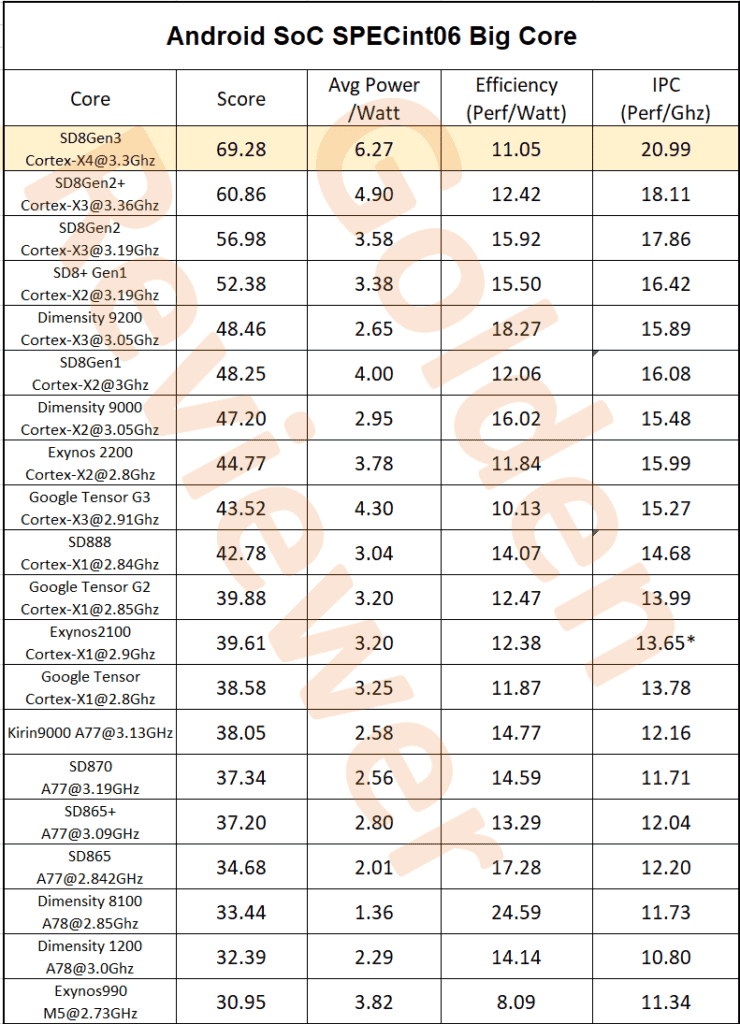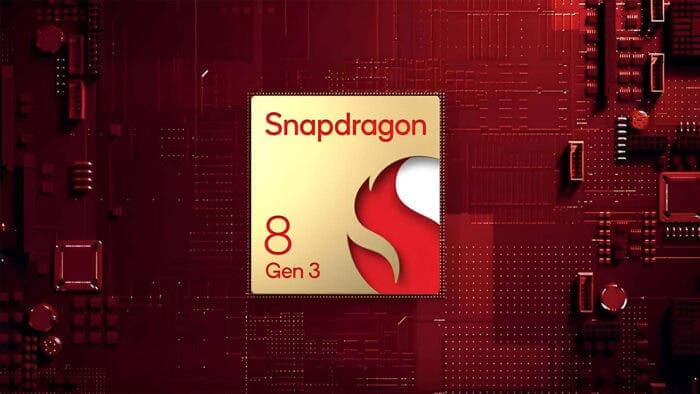Launched back in October, Qualcomm’s Snapdragon 8 Gen 3 has now started appearing in more flagships. Xiaomi 14 was the first lineup to feature the SoC, which is now in the hands of many reviewers. And with that, the flagship Android chipset is currently subject to in-depth evaluation.
While it’s pretty clear that the Snapdragon 8 Gen 3 is a proper upgrade over its predecessor in terms of performance, efficiency has been a concern. One reputed reviewer named Golden Reviewer has shed light on this. The reviewer has tested the chipset with a standardized benchmark tool. And it’s pretty apparent that the CPU’s efficiency is not as great as its performance gains.
Snapdragon 8 Gen 3 Is Less Efficient Than The Predecessor
In case you missed our in-depth coverage, the Snapdragon 8 Gen 3 features a new architecture from Qualcomm. This platform packs two efficiency cores, five performance cores, and one prime core. According to the test from Golden Reviewer, the big core in the chipset offers a massive performance boost.
But the big performance gains come at the cost of efficiency. The Qualcomm Snapdragon 8 Gen 2 had an average power consumption per watt of 4.9 in the SPEC benchmark. In comparison, the latest Snapdragon 8 Gen 3 has a 6.27 average power consumption per watt.

This increase in power consumption doesn’t bode well in terms of efficiency. What’s more interesting is that the SPEC benchmark reveals that the max power consumption per watt is 11.05. This is not good news for the Snapdragon 8 Gen 3.
For those who aren’t familiar with this benchmark, a lower score is better. To be exact, it’s better to have a high performance per watt score and low power consumption per watt. And with these scores, the Snapdragon 8 Gen 3 sees an 11 percent degradation. You can check out the in-depth test result in the picture attached below.

However, it’s worth noting that this might not be an actual representation of the chipset. As critics have pointed out, Android OEMs optimize the Qualcomm SoCs differently. So, there’s a chance that the Snapdragon 8 Gen 3 may have better efficiency scores in other smartphones than the Xiaomi 14 Pro.
Upcoming Chipset May Tell A Different Story
When Qualcomm released the Snapdragon 8 Gen 3, it said that the 8 Gen 4 would see the biggest upgrade. The chipset manufacturer has recently unveiled the Snapdragon X Elite platform. These are laptop-class chipsets, which offer great performance and efficiency performance.

They are the first SoCs to feature the custom Oryon cores. And that’s basically why the Snapdragon X Elite could offer such an amazing performance. Now, as you might know, current Snapdragon mobile chipsets are based on ARM. But with Snapdragon 8 Gen 4, we will see custom in-house cores.
In other words, the Oryon cores that make the Snapdragon X Elite chipsets great performers will be featured on the Snapdragon 8 Gen 4. This will lead to higher performance gains and better overall efficiency scores. And with it, the gap between the Apple flagship chipsets and Snapdragon SoCs could become very close. So, things look very different for the upcoming mobile SoC from Snapdragon.





